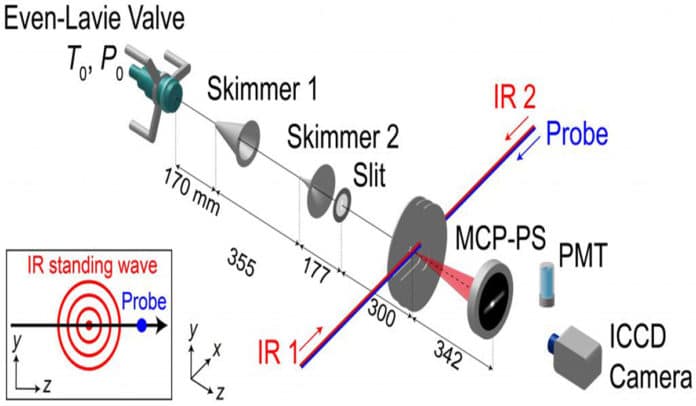When the rotational quantum states of non-polar particles change under the influence of laser fields, their motion trajectories change as well, suggests a new study. Even, small invisible molecules have different motion trajectories for each rotational state under the influence of laser fields.
Along with that, the alignment degree of molecules differs according to the rotational quantum states. This brings significant changes to the trajectories of molecules.
The rotation of molecules is independent in each rotational quantum state in the absence of a laser field. The change occurs when molecules interact with a laser field.
Even a non-polar molecule experiences induced dipole moment in the presence of the laser field. And such a degree varies depending on the rotational quantum state.
The alignment of these molecules is in a specific direction (the laser polarization direction). At the same time, the translational motions (forward movement) of molecules change by interacting with the laser field.
Similarly, the degree of polarity induced by an external electric field is known as, polarization rate. This is not only related to the alignment degree of molecules but also the rotational quantum state. The alignment degree of molecules varies depending on the intensity of laser fields.
However, in the interpretation of previously reported experimental results, the effect of rotational state-dependent molecular alignment in the scattering of molecules was neglected.
In this study, scientists precisely clarified the motion directory of molecules, considering the alignment impact. Through scattering experiments, scientists showed the effect of state-dependent alignment on the scattering of CS2 (carbon disulfide) molecules by an optical standing wave formed by two counter-propagating pulsed infrared (IR) laser beams of identical properties.
The outcomes were examined through trajectory simulations, considering the alignment effect. As per their examination, considering the alignment effect, the velocity changes in the transverse direction were well explained.
Lee Young Kim (Combined M.S/Ph.D. of Physics, UNIST) said, “There was something that could not be explained by the polarization rate that varies with each rotational quantum state. This time, through an accurate assessment of the polarization rate, taking into account the alignment effect, it was possible to interpret the scattering experiments successfully.”
Professor Bum Suk Zhao in the School of Natural Science at UNIST said, “The accurate investigation of the scattering of aligned molecules through laser fields can be the cornerstone of controlling translational molecular motions, as well as for the development of technology that can separate non-polar molecules according to their rotational state. This study will serve as the basis for further research, such as the separation of isomers distributed in different quantum states, as well as for the investigation of reaction dynamics.”
Journal Reference:
- Scattering of adiabatically aligned molecules by nonresonant optical standing waves. DOI: 10.1126/sciadv.aaz0682
